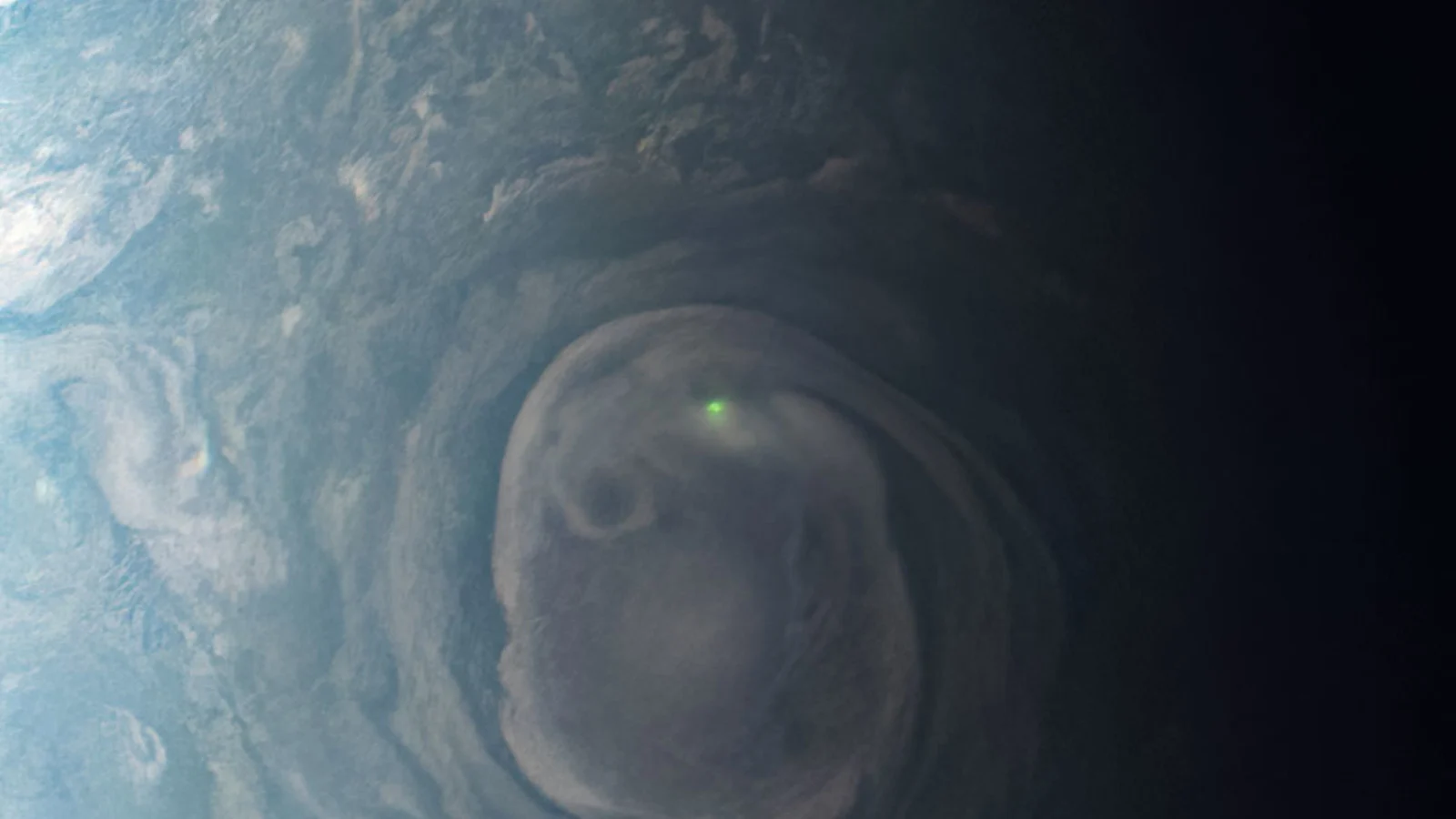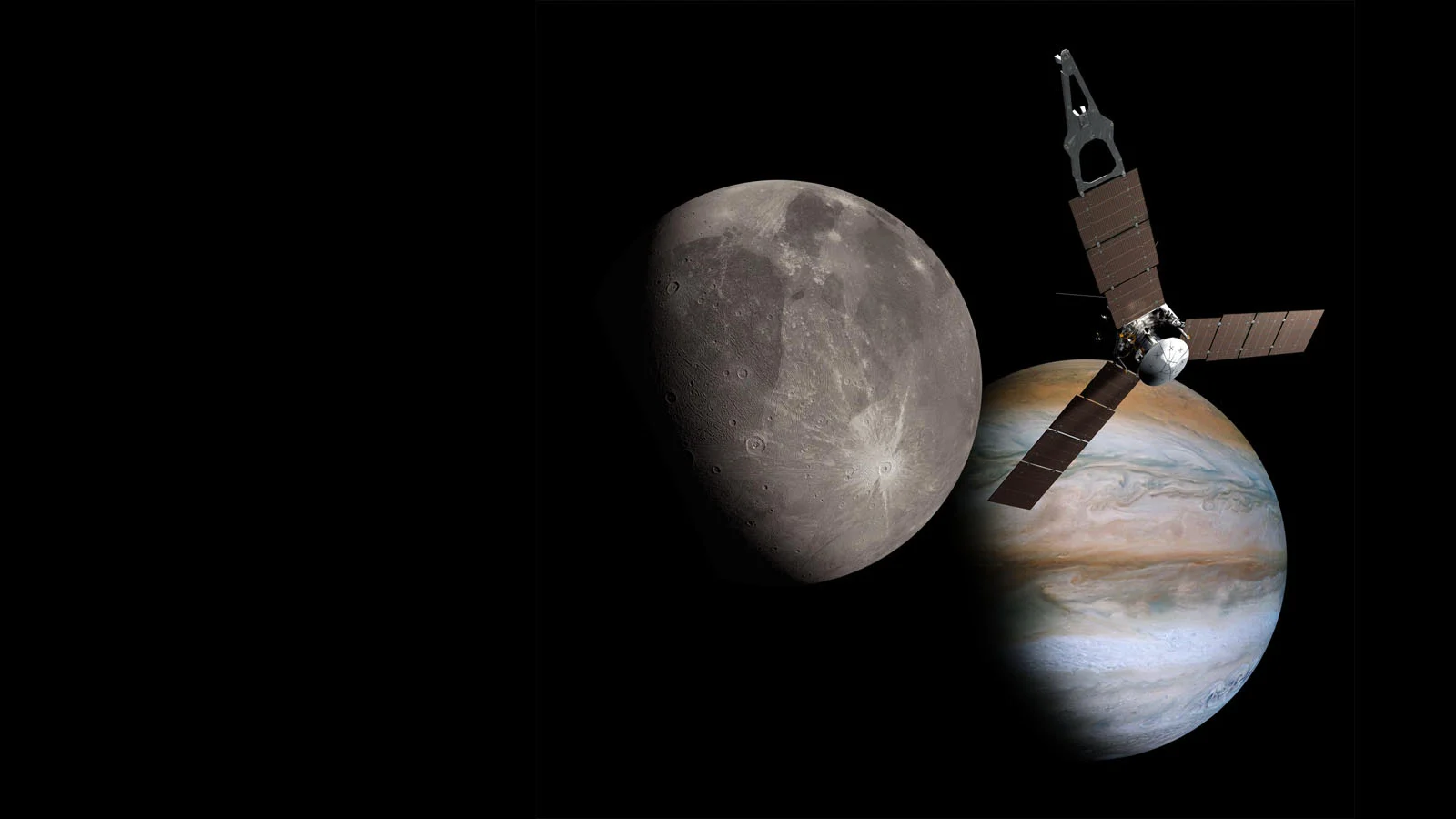
Juno probe spots lightning and haze in Jupiter's atmosphere
On each flyby, NASA's Juno spacecraft reveals amazing details of Jupiter's cloudscape.
The Juno spacecraft has been orbiting around Jupiter for just shy of 7 years now, and the camera that was added purely for our benefit and enjoyment continues to deliver fantastic imagery of the cloud-covered planet.
Jupiter is an entirely alien world compared to Earth. The gas giant's four Galilean moons have more in common with our world than Jupiter does itself. However, thanks to the JunoCam on NASA's Juno spacecraft, we occasionally see things that are very familiar to us.

Citizen scientist Kevin M. Gill spotted this flash of lightning on Jupiter in images returned by the Juno spacecraft from its 31st close flyby of the planet on December 30, 2020. Credit: NASA/JPL-Caltech/SwRI/MSSS/Kevin M. Gill
"In this view of a vortex near Jupiter's north pole, NASA's Juno mission observed the glow from a bolt of lightning. On Earth, lightning bolts originate from water clouds, and happen most frequently near the equator, while on Jupiter lightning likely also occurs in clouds containing an ammonia-water solution, and can be seen most often near the poles," NASA said.
To get the most out of JunoCam, the timing of Juno's orbits around Jupiter typically have the spacecraft passing over the daylit side of the planet on each close flyby. However, according to NASA, in the months ahead, the probe will make repeated passes over Jupiter's night side, allowing us to spot more lightning in the giant planet's atmosphere.
More recently, during Juno's 49th pass over Jupiter in March, JunoCam captured streaks of haze hanging above Jupiter's cloud tops.

This JunoCam image from March 1, 2023 shows bands of white haze above Jupiter's swirling clouds. Credit: NASA/JPL-Caltech/SwRI/MSSS/Björn Jónsson
"The streaks are layers of haze particles that float above the underlying cloud features," NASA JPL wrote back in 2020. "Scientists don't yet know exactly what these hazes are made of or how they form."
Juno's "camera for the people"
When NASA planned the Juno mission to Jupiter, the probe was designed to carry an array of detectors, spectrometers, and radiometers — eight science instruments in all — to study every conceivable aspect of the planet.

In this artist's rendition, NASA's Juno spacecraft makes a flyby of Ganymede, the largest of Jupiter's 93 confirmed moons. Credit: NASA/JPL-Caltech/SwRI/MSSS/Kalleheikki Kannisto
A ninth instrument was added to the array, but this one was not for the science mission. JunoCam is on the Juno spacecraft specifically for us.
"JunoCam is a color, visible-light camera designed to capture pictures of Jupiter's cloud tops," NASA explained. "It was included on the spacecraft specifically for purposes of public engagement; although its images have been helpful to the science team, it is not considered one of the mission's science instruments."
To go along with this public engagement part of the mission, there is an entire website dedicated to JunoCam. There, fans of the mission can help plan JunoCam's next image targets — by submitting telescopic images of the planet, discussing what's going on in Jupiter's atmosphere and voting on the available targets. The public can also download JunoCam's raw images to process however they would like (using their favourite image processing software) and then submit those images back to the website for everyone to see.











